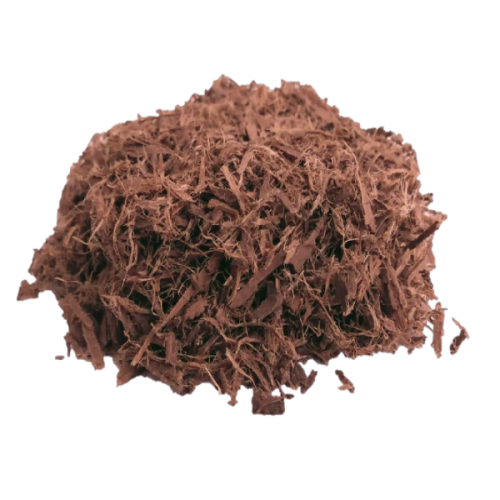Mimosa Hostilis Root Bark holds an important area in traditional practices and modern botanical applications. This post explores the attributes, origins, and customary inquiries bordering this impressive plant material, with a specific focus on the prized Brazillian Mimosa Hostilis Root Barks.
What's Mimosa Hostilis Root Bark?
Mimosa Hostilis, scientifically called Mimosa tenuiflora, is often a perennial tree native to the northeastern area of Brazil and portions of Mexico. The foundation bark of this tree has been utilized for centuries by indigenous communities for many functional and traditional applications. The internal root bark has notable concentrations of tannins, alkaloids, as well as other phytochemicals that add to its distinct properties and purposes.
The tree itself is remarkably resilient, effective at surviving in bad soils and drought conditions. This hardiness contributes to your robust nature from the bark and its chemical profile. When harvested sustainably, the outer root bark is thoroughly divided to access the dear interior bark, which can be then dried and organized to be used.
Brazilian Mimosa Hostilis Root Bark: The Gold Typical
When talking about good quality in Mimosa Hostilis products and solutions, the Brazillian Mimosa Hostilis Root Barks are commonly considered top-quality from the botanical current market. Several variables add to this reputation:
Ideal Expanding Conditions
The specific soil composition, climate, and ecosystem of Brazil's northeastern region make best disorders for Mimosa tenuiflora to create its complete chemical opportunity. The mineral-wealthy soils and individual pattern of rainfall and daylight in this region appear to improve the focus of Energetic compounds in the root bark.Common Harvesting Expertise
In areas in which Mimosa Hostilis has actually been utilised ordinarily, harvesters have developed refined solutions for sustainable harvesting that preserves the two the tree along with the potency on the bark. This expertise, passed down by way of generations, makes sure that the bark is gathered at the appropriate time of 12 months and processed using methods that sustain its integrity.Distinct Physical Features
Brazilian Mimosa Hostilis Root Bark usually shows a rich reddish-brown to purple interior bark by using a fibrous, dense texture. The Visible attributes often serve as an First indicator of top quality, with experienced buyers recognizing the unique overall look of bark from this location.
Typical Purposes and Makes use of
The programs of Mimosa Hostilis Root Bark span both regular and modern-day contexts, although it's vital to know the legal status of those employs varies by nation and jurisdiction.
Classic Craft and Practice
Indigenous communities have Traditionally applied Mimosa Hostilis Root Bark for creating organic dyes for textiles, With all the bark making lovely shades of purple, burgundy, and deep brown. The tannin-rich Attributes also built it important for leather-based tanning and various simple programs.Modern-day Botanical Exploration
Modern fascination in Mimosa Hostilis Root Bark extends to varied fields of botanical exploration, especially learning its chemical composition and probable apps. Scientists have recognized many intriguing compounds within the bark that warrant further scientific investigation.Horticultural and Agricultural Makes use of
In permaculture and sustainable agriculture, Mimosa tenuiflora is valued being a Brazillian Mimosa Hostilis Root Barks nitrogen-correcting species that could boost soil high quality. The bark itself, when processed, can be employed to be a organic mulch or soil amendment in particular agricultural contexts.Top quality Evaluation and Identification

For people dealing with Mimosa Hostilis Root Bark, comprehension ways to evaluate excellent is essential. Superior-high quality materials, notably reliable Brazillian Mimosa Hostilis Root Barks, generally exhibits specified attributes:
The visual appearance ought to present a clear difference between the outer and internal bark, While using the internal bark exhibiting deep, lively shades. The fabric ought to have a attribute earthy, somewhat sweet aroma, totally free from musty or moldy notes. When processed, the bark ought to produce a great powder although preserving its fibrous structure till grinding. Effectively dried bark should be brittle although not dusty, indicating proper humidity material.
Usually Asked Questions (FAQs)
1. What's the difference between Mimosa Hostilis Root Bark from Brazil together with other regions?
Brazilian Mimosa Hostilis Root Bark is usually regarded exceptional due to the exceptional developing circumstances in northeastern Brazil, which end in increased concentrations of Lively compounds. The standard harvesting procedures utilised In this particular area also lead to the general quality and potency of the final solution.2. How should really I keep Mimosa Hostilis Root Bark to maintain its top quality?
Retail outlet the bark in a very interesting, dark, and dry location in an airtight container. Defense from light, moisture, and extreme temperature fluctuations should help maintain the bark's chemical integrity and forestall degradation of its active parts.three. Is Mimosa Hostilis an endangered species?
No, Mimosa tenuiflora just isn't now outlined being an endangered species. The truth is, It is recognized for its resilient advancement and ability to thrive in hard ailments. Nevertheless, responsible harvesting techniques remain vital to ensure the sustainability of wild populations.four. Am i able to grow Mimosa Hostilis outside of its native habitat?
While Mimosa tenuiflora thrives ideal in its indigenous tropical weather, it may be cultivated in related environments. The tree demands perfectly-drained soil, a good amount of sunlight, and safety from frost. Nonetheless, the chemical profile of cultivated specimens could differ from wild-harvested Brazilian product.five. Exactly what is the authorized status of Mimosa Hostilis Root Bark?
The legal status varies considerably by state and jurisdiction. In certain areas, the Uncooked bark is lawful to possess, although in Other individuals, certain extracts or preparations may very well be regulated. Usually analysis and comply with community guidelines and laws prior to getting or employing any botanical material.Understanding Mimosa Hostilis Root Bark, specifically the high quality Brazillian Mimosa Hostilis Root Barks, involves appreciation of its botanical features, regular context, and correct programs. Whether for analysis, craftsmanship, or botanical analyze, this impressive plant substance continues to generally be a matter of desire throughout various fields, even though usually inside of suitable lawful and moral boundaries.